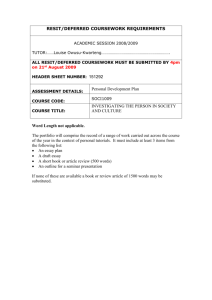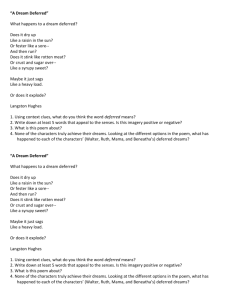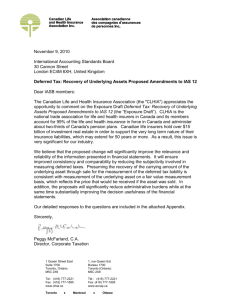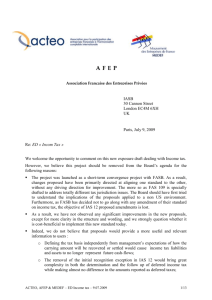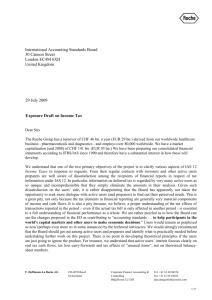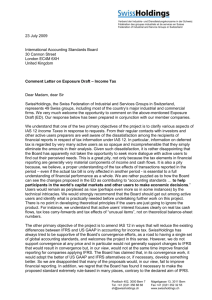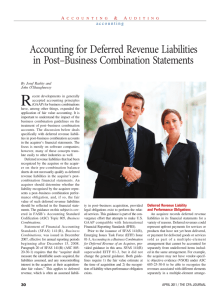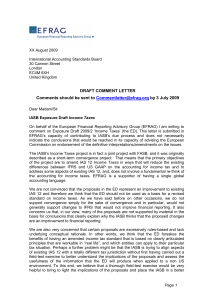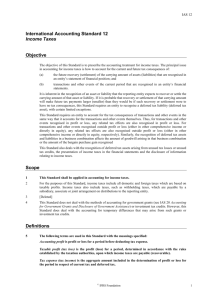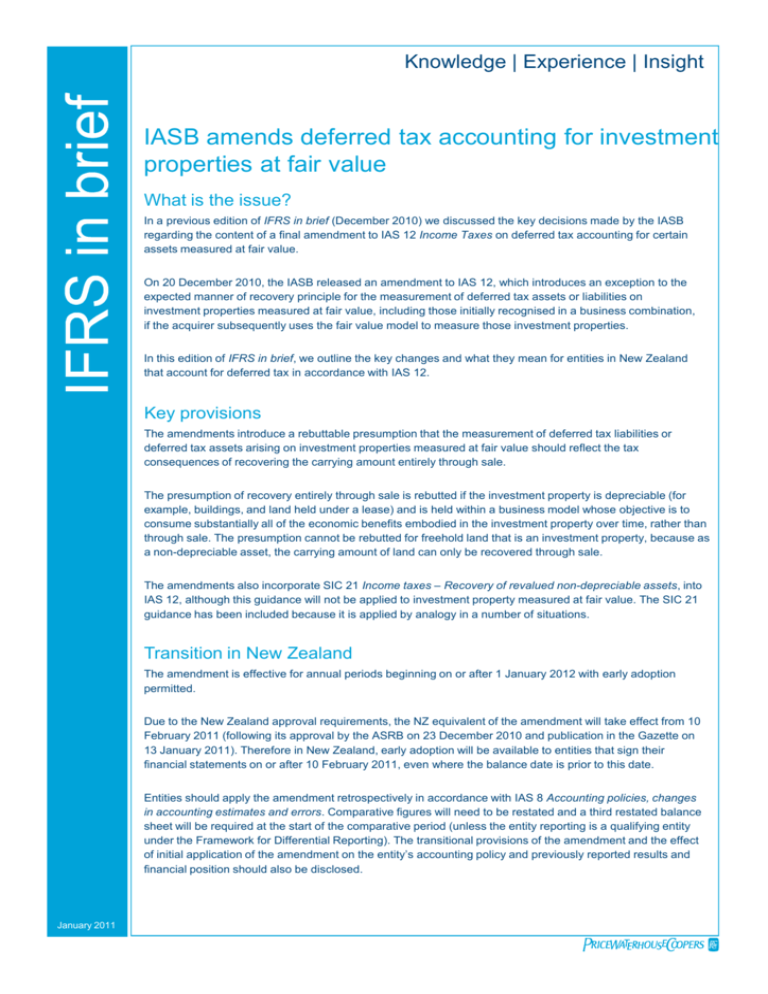
Knowledge | Experience | Insight
IASB amends deferred tax accounting for investment
properties at fair value
What is the issue?
In a previous edition of IFRS in brief (December 2010) we discussed the key decisions made by the IASB
regarding the content of a final amendment to IAS 12 Income Taxes on deferred tax accounting for certain
assets measured at fair value.
On 20 December 2010, the IASB released an amendment to IAS 12, which introduces an exception to the
expected manner of recovery principle for the measurement of deferred tax assets or liabilities on
investment properties measured at fair value, including those initially recognised in a business combination,
if the acquirer subsequently uses the fair value model to measure those investment properties.
In this edition of IFRS in brief, we outline the key changes and what they mean for entities in New Zealand
that account for deferred tax in accordance with IAS 12.
Key provisions
The amendments introduce a rebuttable presumption that the measurement of deferred tax liabilities or
deferred tax assets arising on investment properties measured at fair value should reflect the tax
consequences of recovering the carrying amount entirely through sale.
The presumption of recovery entirely through sale is rebutted if the investment property is depreciable (for
example, buildings, and land held under a lease) and is held within a business model whose objective is to
consume substantially all of the economic benefits embodied in the investment property over time, rather than
through sale. The presumption cannot be rebutted for freehold land that is an investment property, because as
a non-depreciable asset, the carrying amount of land can only be recovered through sale.
The amendments also incorporate SIC 21 Income taxes – Recovery of revalued non-depreciable assets, into
IAS 12, although this guidance will not be applied to investment property measured at fair value. The SIC 21
guidance has been included because it is applied by analogy in a number of situations.
Transition in New Zealand
The amendment is effective for annual periods beginning on or after 1 January 2012 with early adoption
permitted.
Due to the New Zealand approval requirements, the NZ equivalent of the amendment will take effect from 10
February 2011 (following its approval by the ASRB on 23 December 2010 and publication in the Gazette on
13 January 2011). Therefore in New Zealand, early adoption will be available to entities that sign their
financial statements on or after 10 February 2011, even where the balance date is prior to this date.
Entities should apply the amendment retrospectively in accordance with IAS 8 Accounting policies, changes
in accounting estimates and errors. Comparative figures will need to be restated and a third restated balance
sheet will be required at the start of the comparative period (unless the entity reporting is a qualifying entity
under the Framework for Differential Reporting). The transitional provisions of the amendment and the effect
of initial application of the amendment on the entity’s accounting policy and previously reported results and
financial position should also be disclosed.
January 2011
Knowledge | Experience | Insight
IASB amends deferred tax accounting for investment
properties at fair value…cont’d
Am I affected?
Based on the limited scope, only entities that carry investment properties at fair value will be affected by the
exception (unless the presumed sale approach is rebutted because of an entity’s business model). The
presumed sale approach will, in most cases, result in deferred tax liabilities being recognised only for the
amount of tax depreciation recoverable on sale.
It might be necessary for management to reconsider recoverability of an entity’s deferred tax assets because of
the changes in the recognition of deferred tax liabilities on investment properties, and to consider the impact of
the amendment on previous business combinations.
PwC insight
As the amendment will apply solely to investment properties measured at fair value, deferred tax on other
assets will remain unchanged. This will include investment properties measured at cost, and PP&E and
intangible assets whether measured at cost or valuation. Consequently, the significant increase in deferred tax
liabilities caused by the loss of tax depreciation deductions on buildings with an economic life of greater than
50 years will not be reversed, unless those buildings are investment properties measured at fair value.
What do I need to do?
Management should begin to assess its business model and the implications of the amendment on its existing
deferred tax liabilities or assets arising on investment properties.
Disclaimer
This publication has been prepared for general guidance on matters of interest only, and does not constitute professional advice. It does not
take into account any objectives, financial situation or needs of any recipient; any recipient should not act upon the information contained in this
publication without obtaining independent professional advice. No representation or warranty (express or implied) is given as to the accuracy or
completeness of the information contained in this publication, and, to the extent permitted by law, PricewaterhouseCoopers, its members,
employees and agents do not accept or assume any liability, responsibility or duty of care for any consequences of you or anyone else acting, or
refraining to act, in reliance on the information contained in this publication or for any decision based on it.
January 2011
© 2011 PricewaterhouseCoopers. All rights reserved. PricewaterhouseCoopers refers to the network of member firms of
PricewaterhouseCoopers International Limited, each of which is a separate and independent legal entity.


